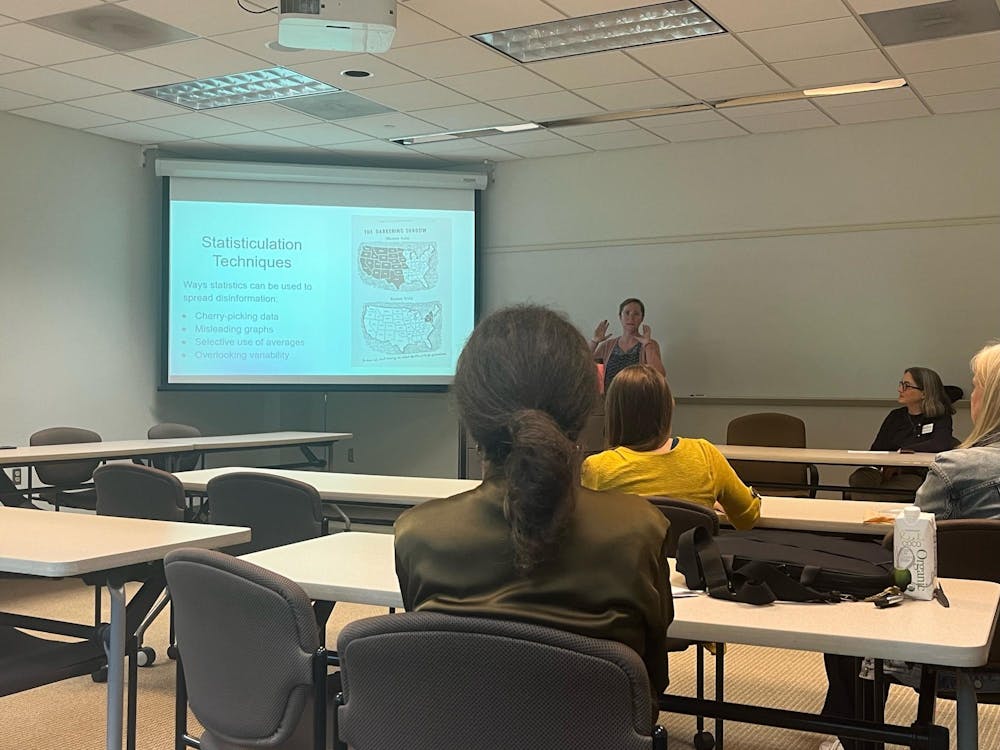This Wednesday from 3 p.m. to 4 p.m. the Digital and Public Humanities (DPH) department hosted a roundtable discussion on disinformation. The event was hosted by Kristin Kuter from math and computer sciences and librarian Catherine Pellegrino, and moderated by the DPH program coordinator and English professor Sarah Noonan.
According to Noonan, the discussion topic was chosen “in part because of the election coming up, and also just because, in order to have any sort of civic discourse … you have to have some understanding of how to establish a shared set of facts.”
Kuter spoke first and focused on the way people use statistics to spread disinformation. She said humans tend to prefer to graphics over statistics, but we should still be wary of both. She emphasized that you should look for missing information like absolute numbers and check the reliability of the source.
Pellegrino took what she called a more humanistic approach, discussing the way professional journalists fact check information. She used a strategy developed by Mike Caulfield which called for a journalist to “SIFT,” or stop, investigate the source, find better and wider coverage and trace the claims.
She said whenever you come across new information online the most important thing you can do is stop to evaluate the source and investigate it by means as simple as a Wikipedia search. Pellegrino also emphasized that falling for disinformation is human nature and you shouldn’t beat yourself up if you do end up falling for it.
Founded in 2022, the DPH minor is a relatively new program at Saint Mary’s College designed to implement a projects-based approach to the humanities discipline.
“We've designed the [minor] so that students who are in humanities disciplines can gain the skills required to do humanities focused jobs outside of the university, such as working in museums, working in libraries, working in nonprofits,” Noonan said. “On the other hand, STEM and business students … will benefit from this minor as well, because they're given a chance to work in humanities disciplines."
Noonan continued with an example about how students were tasked with designing an exhibit for a local artist’s work.
“They think about how to organize that material in order to make sure that it tells a story as the kind of viewers walk through the exhibit, so that it trains students in project development and exhibit curation,” Noonan said.










